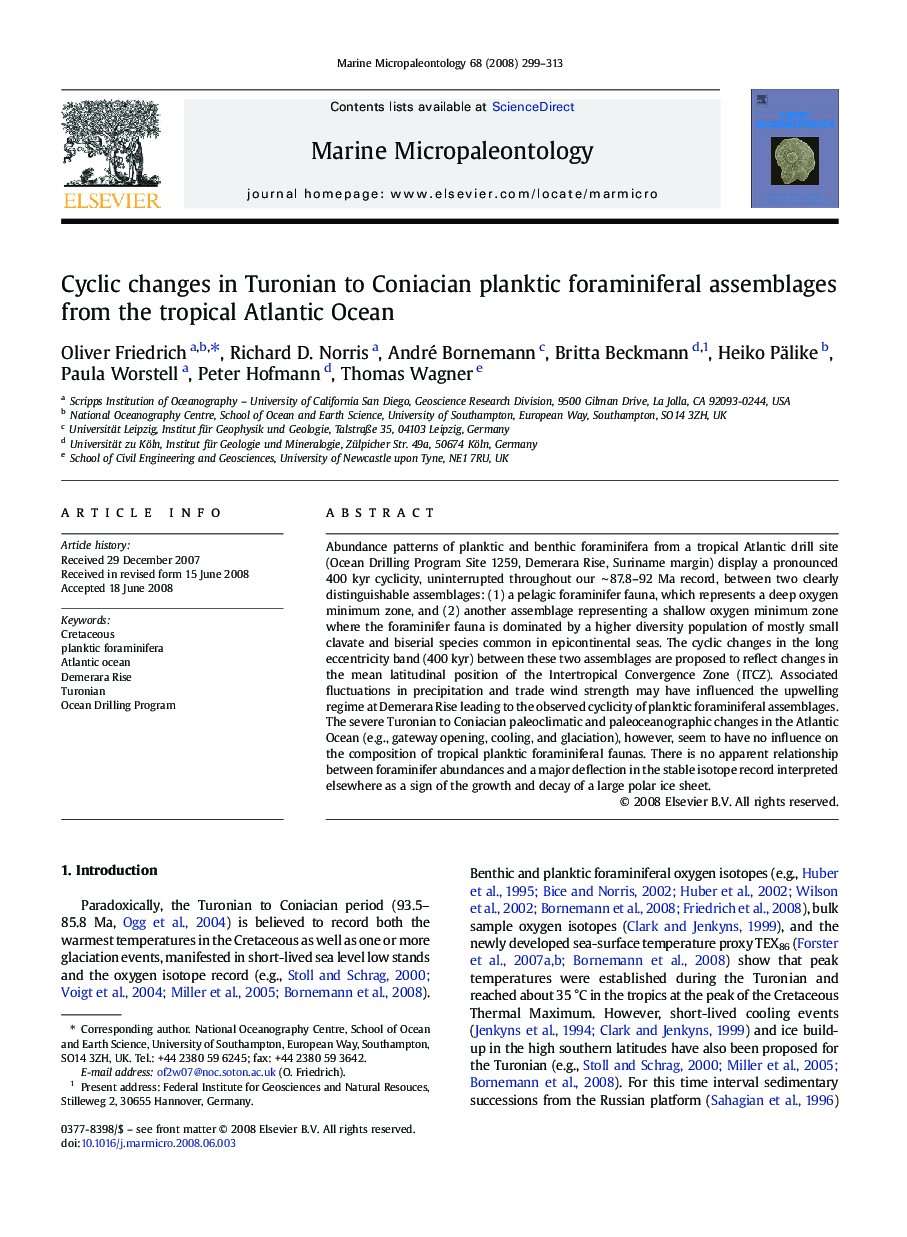| Article ID | Journal | Published Year | Pages | File Type |
|---|---|---|---|---|
| 4749240 | Marine Micropaleontology | 2008 | 15 Pages |
Abstract
Abundance patterns of planktic and benthic foraminifera from a tropical Atlantic drill site (Ocean Drilling Program Site 1259, Demerara Rise, Suriname margin) display a pronounced 400 kyr cyclicity, uninterrupted throughout our â¼Â 87.8-92 Ma record, between two clearly distinguishable assemblages: (1) a pelagic foraminifer fauna, which represents a deep oxygen minimum zone, and (2) another assemblage representing a shallow oxygen minimum zone where the foraminifer fauna is dominated by a higher diversity population of mostly small clavate and biserial species common in epicontinental seas. The cyclic changes in the long eccentricity band (400 kyr) between these two assemblages are proposed to reflect changes in the mean latitudinal position of the Intertropical Convergence Zone (ITCZ). Associated fluctuations in precipitation and trade wind strength may have influenced the upwelling regime at Demerara Rise leading to the observed cyclicity of planktic foraminiferal assemblages. The severe Turonian to Coniacian paleoclimatic and paleoceanographic changes in the Atlantic Ocean (e.g., gateway opening, cooling, and glaciation), however, seem to have no influence on the composition of tropical planktic foraminiferal faunas. There is no apparent relationship between foraminifer abundances and a major deflection in the stable isotope record interpreted elsewhere as a sign of the growth and decay of a large polar ice sheet.
Related Topics
Physical Sciences and Engineering
Earth and Planetary Sciences
Palaeontology
Authors
Oliver Friedrich, Richard D. Norris, André Bornemann, Britta Beckmann, Heiko Pälike, Paula Worstell, Peter Hofmann, Thomas Wagner,
